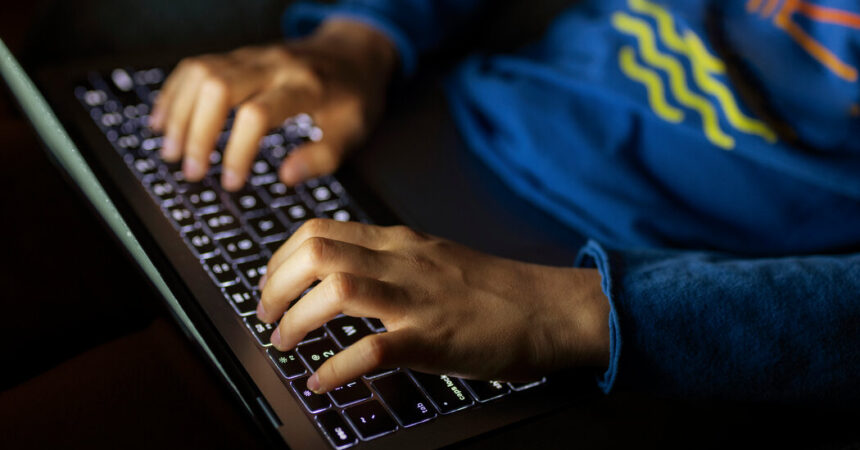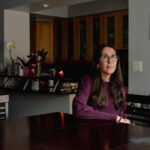The variety of Individuals receiving psychotherapy elevated by 30 % through the pandemic, as digital classes changed in-person appointments — however new analysis dampens the hope that know-how will make psychological well being care extra obtainable to the neediest populations.
In reality, the researchers discovered, the shift to teletherapy has exacerbated current disparities.
The rise in psychotherapy has occurred amongst teams that already loved extra entry: folks in higher-income brackets, residing in cities, with regular employment and extra training, researchers present in a collection of research, the newest of which was, revealed Wednesday in The American Journal of Psychiatry.
Amongst those that haven’t benefited from the increase, the crew discovered, are kids from low-income households, Black kids and adolescents, and adults with “severe psychological misery.”
“I believe that the entire system of care — and perhaps the web supply is a chunk of this — seems to be pivoting away from these in biggest want,” mentioned Dr. Mark Olfson, a professor of psychiatry at Columbia College Irving Medical Heart and the lead creator of the research on entry to care.
“We’re seeing that these with the best misery are shedding floor, by way of their probability of being handled, and that to me is a vital and disconcerting pattern,” he added.
It wasn’t presupposed to be this manner. Within the Nineties, teletherapy was championed as a technique to attain deprived sufferers residing in distant areas the place there have been few psychiatrists. A decade later, it was introduced as a extra accessible various to face-to-face classes, one that might radically decrease obstacles to care.
“Telehealth didn’t reside as much as the hype,” mentioned C. Vaile Wright, senior director of the workplace of well being care innovation on the American Psychological Affiliation. The explanations, she added, aren’t any shock: Many Individuals lack entry to dependable broadband, and insurers don’t adequately reimburse suppliers, who, in flip, select to deal with privately paying purchasers.
“If you happen to can’t afford it, irrespective of the modality, you simply can’t afford it,” Dr. Wright mentioned. It could be, she added, that weekly remedy classes are merely not scalable to a broad inhabitants, and the sector ought to discover light-touch options, like single-session interventions and digital therapeutics.
As telehealth platforms develop, they might be attracting clinicians from group settings with the promise of versatile hours and higher situations, mentioned Dr. Jane M. Zhu, an affiliate professor of drugs at Oregon Well being and Science College who research the accessibility of psychological well being providers.
Deciding on from a big affected person pool, they might choose to deal with sufferers with milder situations and extra capacity to pay. “It’s actually one thing we should always know,” Dr. Zhu mentioned. “There ought to be gentle round this. Who’re these corporations serving? And what does this imply for sufferers who’re most in want?”
The share of Individuals receiving psychotherapy remained comparatively regular, at 3 to 4 %, for many years earlier than starting a gradual rise, mentioned Dr. Olfson.
Then two components — the pandemic and the explosion of teletherapy — contributed to a pointy enhance, with the variety of adults receiving psychotherapy rising to eight.5 % in 2021 from 6.5 % in 2018. (By comparability, the annual proportion of adults taking psychotropic medicine remained secure, at round 17.5 %.)
Dr. Olfson mentioned he was shocked by the magnitude of the rise. “We haven’t had one thing like Covid earlier than, and we haven’t had this know-how earlier than,” Dr. Olfson mentioned. “There was quite a lot of social isolation, quite a lot of loneliness. And people are issues that psychotherapy is designed to handle, in a manner that medicine can’t.”
The findings are primarily based on the Medical Expenditure Panel Survey, which is carried out by the federal authorities and measures how American civilians use and pay for well being care. The survey doesn’t embrace these within the army, incarcerated or in nursing houses, hospitals or homeless shelters.
Earlier research, primarily based on insurance coverage knowledge, confirmed that Individuals’ psychological well being spending elevated by 54 % from 2020 to 2022, amid a tenfold enhance in using teletherapy.
The brand new research flesh out which Individuals are receiving the care. An evaluation of 89,619 adults revealed in JAMA Psychiatry final month discovered psychotherapy use grew most among the many youngest respondents, among the many most educated and amongst these within the highest two revenue brackets.
An evaluation of using telehealth by kids and adolescents from 2,445 households reached related conclusions. The research, revealed immediately, discovered that kids from wealthier households, utilizing personal insurance coverage, had been way more probably to make use of teletherapy. Youngsters in city areas had been almost thrice as probably to make use of it as their rural counterparts.
Through the years of the pandemic, using psychological well being providers by Black kids and adolescents decreased, falling to 4 % in 2021 from 9.2 % in 2019. In the identical interval, using psychological well being care amongst white kids rose, to 18.4 % from 15.1 %, the crew present in one other research.
“What we discover is that it does look like simply exacerbating current disparities,” Dr. Olfson mentioned. “I believe there’s an actual must attempt to tackle that.”








